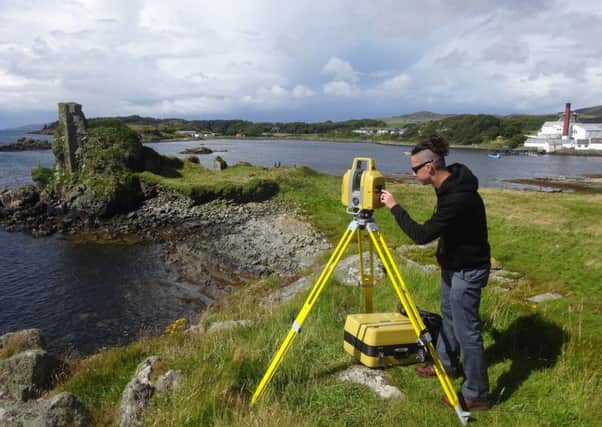Ancient secrets of Clan MacDonald stronghold set to be unearthed


A team of 40 archaeologists and other scientists plan to spend three weeks on the island in the Inner Hebrides investigating the ruins of Dunyvaig Castle for the first time.
The fortress was once a stronghold of the Lords of the Isles, the chiefs of the Clan MacDonald, and was the scene of battles between them and their rivals the Campbells.
Advertisement
Hide AdAlthough the visible ruins of the castle date predominately from the 16th century, its foundations are thought to be much older and it may have been constructed on top of a prehistoric dun or fort.
The team of researchers hope to uncover when the castle was first built, why its dramatic location was chosen and what kind of people lived and worked both inside and outside its walls.
After a year of planning, the formal excavation of the site began yesterday, with the first step set to be an analysis of any forgotten structures and deposits hidden beneath the castle.
As well as archaeologists, the team includes geophysicists and palaeo-environmentalists who hope to use the dig’s findings to reconstruct the medieval landscape.
The project is being organised by local charity Islay Heritage, which is hoping to secure additional funding to hold at least four more seasons of excavation up until 2023.
Dunyvaig Castle sits on a peninsula adjacent to the Lagavulin Distillery, which produces one of Scotland’s most famous single malt whiskies and attracts thousands of tourists each year.
Advertisement
Hide AdFunds for the excavation were raised during the distillery’s 200th anniversary celebrations, which saw the sale of more than 200 rare bottles of Lagavulin generate around £500,000 for local causes.
“As far as anyone has been able to discover, there’s been no serious excavation done at the castle,” said Dr Nick Morgan, head of whisky outreach at Diageo, the drinks firm which owns Lagavulin.
Advertisement
Hide Ad“It’s well known and very famous, but neither Victorian dilettantes nor more modern scientific archaeologists have looked at the site at all.
“Compared to other Hebridean islands, the archaeology of Islay is not greatly understood, or not as understood as it should be.”
Despite the castle’s imposing position on Lagavulin Bay on the south of the island, there are currently no information boards setting out its history for the benefit of tourists.
It was forfeited to the crown in 1493, but frequent arguments over its ownership broke out between the MacDonalds and their rivals in the subsequent decades.
Dr Morgan said the dig would improve people’s access to the ruins and their understanding of the castle’s history.
John Raven of Historic Environment Scotland said he hoped the project would help to showcase Islay’s historic significance.
Advertisement
Hide Ad“Dunyvaig Castle holds a deeply important place in Gaelic culture, and the excavations should help us better understand medieval Gaelic culture and inform the castle’s conservation, so that it can be preserved and access opened up in the future,” he added. “We can’t wait to see the results.”